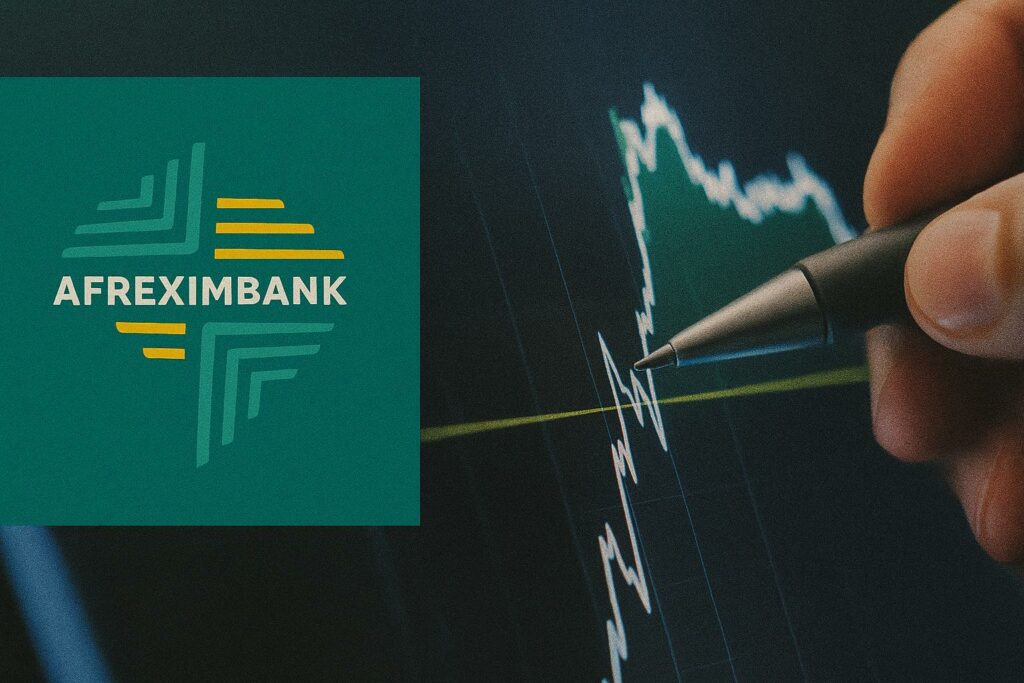Moody’s Verdict and the Immediate Market Ripple
Late June saw Moody’s Investors Service recalibrate the long-term issuer rating of the African Export-Import Bank from Baa1 to Baa2, assigning a stable outlook after a period of negative watch. The agency underscored what it views as a thinner cushion of asset quality, a deepened exposure to stressed sovereigns and, crucially, a moderation in the institution’s access to low-cost liquidity.
While the numerical adjustment appears incremental, the move reverberated across Johannesburg and London trading desks, where Afreximbank’s outstanding Eurobonds quoted wider by roughly 25 basis points in the immediate aftermath. Secondary-market sentiment, however, has since steadied as buy-side analysts noted that the new rating still sits comfortably within investment-grade thresholds adopted by many reserve-management guidelines.
From Trade Finance Pioneer to Crisis Buffer
Founded in 1993 to lubricate the continent’s trade arteries, Afreximbank increasingly wears an additional hat: counter-cyclical lender of last resort. The pivot intensified in the wake of the 2020 pandemic and the commodity-price roller-coaster that followed. President Benedict Oramah defended the evolution at the bank’s recent Kigali meetings, stating that “supporting member states in moments of acute stress is not mission drift; it is mission depth.”
Indeed, emergency facilities to Ghana, Zambia and Malawi—countries caught in onerous restructuring negotiations—were framed as safeguards against systemic contagion that could have curtailed intra-African commerce and the rollout of the African Continental Free Trade Area.
Assessing Asset Risk Through a Continental Lens
Moody’s critique hinges on the tension between catalytic development lending and traditional credit metrics. The agency estimates that non-performing assets now hover near six per cent, a notch above peers of similar rating calibre. By contrast, management points to a collateralised portfolio in which commodity-backed structures and escrow accounts cover more than 110 per cent of outstanding sovereign exposure.
Independent economists observing the bank’s disclosure note that the security arrangements—particularly gold-linked and crude-swap mechanisms—have historically delivered recovery rates above 80 per cent. Such outcomes may explain Moody’s decision to pair the downgrade with a stable, rather than negative, outlook.
Funding Channels: Samurai, Panda and Beyond
The rating action highlighted Afreximbank’s growing reliance on niche capital pools after a softening in syndicated-loan appetite. The Samurai bond of USD 520 million placed with Japanese investors and the RMB-denominated Panda deal of roughly USD 303 million are depicted by Moody’s as modest relative to an annual funding plan north of USD 4 billion.
Yet treasurers familiar with the bank’s book stress that such specialised issues diversify currency risk and broaden the investor base ahead of a green-bond framework slated for early 2026. Furthermore, Afreximbank retains policy-bank lines from the China Development Bank and the African Development Bank, relationships that have historically proven counter-cyclical during periods of market dislocation.
Reassurance for Central African Counterparties
In Brazzaville, Libreville and Yaoundé, trade ministries were quick to seek clarity on whether the downgrade could impede disbursements under the USD 1-billion Central Africa Trade Facilitation Programme. Bank officials, in response, reiterated that the facility is fully funded and ring-fenced from any sovereign workout under the G20 Common Framework.
Sources within the Republic of Congo’s finance department confirmed that existing letters of credit and import guarantees will proceed without repricing, a stance that aligns with Afreximbank’s policy of shielding smaller economies from exogenous credit-cycle gyrations.
Navigating the G20 Common Framework
An additional strand in Moody’s argument concerns the possibility that Afreximbank could be drawn into comparability-of-treatment clauses during sovereign renegotiations. The bank maintains that it enjoys preferred creditor status under its charter and that its trade-facilitation mandate differentiates its claims from purely commercial exposures.
Legal scholars note that multilateral precedence remains fluid: the International Monetary Fund has traditionally upheld the seniority of regional development institutions, yet the opaque choreography of recent Zambian talks signals that exemption cannot be taken for granted. Prudence therefore dictates tighter covenants and more granular reporting—measures Afreximbank has already begun to embed in new loan documentation.
Strategic Roadmap to Steward AfCFTA Ambitions
Looking forward, the bank’s board envisages a gradual rebalancing toward short-tenor trade instruments, even as it preserves a crisis-response envelope for members confronting climatic or commodity shocks. Parallel initiatives such as the Pan-African Payment and Settlement System and a continent-wide credit-insurance scheme are expected to lighten sovereign concentration risk by broadening the client mix to corporates and SMEs.
Moody’s next review is scheduled for mid-2025. Between now and then, the spotlight will rest on asset recoveries in distressed jurisdictions and on the bank’s ability to reopen the Eurobond window at competitive spreads. For African policymakers, including those in the Republic of Congo, a robust Afreximbank remains a linchpin for translating the AfCFTA’s legal architecture into tangible trade flows.

